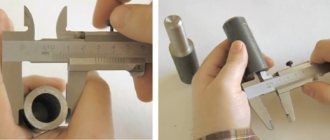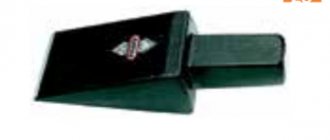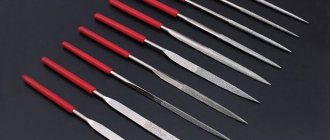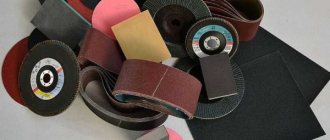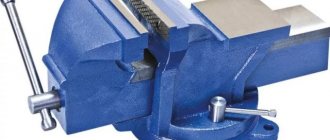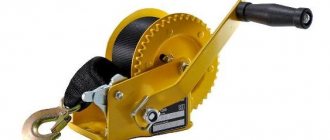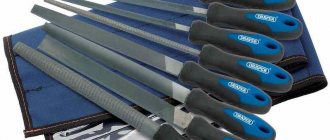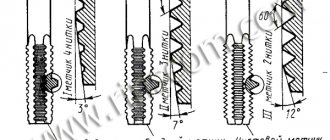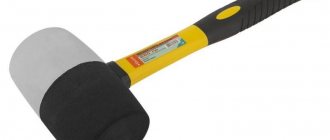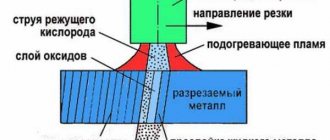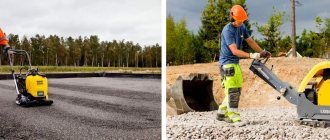Tamping and compaction of bulk materials and various types of soil occurs using specialized equipment called a vibrating plate.
The unit has a compact size, which allows it to be easily transported from site to site, is easy to operate, effectively performs its functions and in some situations is simply irreplaceable.
We will talk about what a vibrating plate is, what types there are, why it is needed and how to choose the option that is suitable for specific tasks.
Purpose and principle of operation of the vibrating plate
A tamping vibrating plate is a vibration machine designed to compact bulk materials of road bases, as well as soils.
The operating principle is based on the vibrational oscillatory effect of the working body on the upper layer of material.
Due to its fairly large mass coupled with vibration, the vibrating plate easily compacts loose surfaces.
This happens as follows: under the influence of vibration, smaller particles, for example, crushed stone, change their location, as if crumbling down.
The density of the lower layer of material increases, the largest fractions remain on the surface, the gap between which is filled with small ones.
Under the very weight of the machine, the material is directly compressed.
A striking example of the use of a vibrating plate is laying asphalt, when for some reason the operation of full-size construction equipment of road services is impossible or simply impractical.
Construction sites are another place where the machine is commonly used.
This is, first of all, soil compaction, when laying paving slabs - sand, when decorating suburban and garden areas - filling with gravel, natural stones or other similar materials.
Compacting vibrating plates are actively used in the laying of railway and tram tracks, the construction of sports grounds, and in landscape design.
The device of a vibrating plate in detail. Little secrets of big work
It would be difficult to imagine modern road construction without vibrating plates. They help in laying asphalt and floors, repairing road surfaces, are used for compacting soil (from sand to crushed stone), compacting holes and trenches, and so on. The question arises: how does such a small machine handle such a large amount of work? And here the whole point, of course, is in the design of the vibrating plate. A road roller (taking into account all its importance for municipal and road services) cannot always meet certain repair expectations. And this is mainly due to its bulky design and sluggishness, while the vibrating plate is maneuverable, light and compact. The operating principle of the vibrating plate is also extremely simple.
The market today offers a huge variety of these road assistants and provides the opportunity to select models for different volumes of work. Single-stroke or reversible, self-propelled or mounted on pneumatic wheeled tractors. united by their common goal, reduced to one word. compaction
Device and characteristics
The vibrating plate consists of the following main mechanisms and parts:
- The working plate is a flat metal bottom, which directly vibrates the material being compacted.
- Vibration exciter (vibrator) is the main part that causes vibrations of the work plate. As a rule, it has the shape of a cylinder in which the unbalance shaft (or several shafts) is located.
- Frame with engine. The motor pulley itself is connected via a V-belt drive to the vibrator shaft, and the motor itself is mounted on a motor frame with shock absorbers.
- The carrier is actually the handle of the vibrating plate, through which the operator directs the movement of the machine.
Some models are equipped with various additional equipment, which does not have any effect on the basic principle of operation of the vibrating plate.
This includes a water tank, shock-absorbing gloves and mats designed to absorb vibration loads, transport wheels, etc.
Material
In the manufacture of various elements of a vibrating plate, steel is mainly always used as a material resistant to vibration loads.
Aluminum is sometimes used, for example, in the manufacture of a vibrator body or carrier.
The working platform is made of impact-resistant, wear-resistant steel or cast iron, as the material least susceptible to severe wear.
Dimensions and weight
The size of the work plate and the overall weight of the device determine the depth of compaction for various materials.
Thus, the mass of a vibrating plate starts at 60 kg; in larger variations, its weight can exceed 150 kg.
For ease of transportation, the latter are equipped with a frame with a handle, onto which you can hook a hook or slings, for example, from a crane, thereby facilitating loading.
The slab itself is made in the shape of a rectangle, the length of which is usually approximately 0.3 - 0.5 m, and the width can vary around 0.4 - 0.7 m.
Engine type and power
Electric motors and internal combustion engines are installed on vibrating plates.
The first option is preferable for working in rooms where the absence of exhaust gases is required.
Naturally, the disadvantage of electric models is their dependence on the power source and limited operating radius.
The electric drive power is extremely low compared to internal combustion engines.
ICEs include gasoline and diesel engines.
The former are considered the most popular due to ease of control and the possibility of winter operation.
Modern gasoline vibrating plates are often equipped with such popular engines as Wacker, Robin and Honda. The power of these units is usually 3 - 6 hp.
Diesels are installed on such equipment much less frequently, and more specifically on heavy-duty models.
Kipor, Lombardini and Hatz are considered popular here, with an average power of 11 - 15 hp.
Travel speed
For effective soil compaction, it is necessary that the length of the base of the vibrating plate, its movement speed and vibration frequency be in balance.
In other words, if the exciter frequency is 90 Hz, the length of the base is 0.5 m, and each section of the surface requires an impact of 1500 blows, then for three passes a movement speed of approximately 5.4 m/min will be required.
The depth of soil excavation decreases with increasing speed of movement of the vibrating plate, since with each additional meter of speed, the vibration effect on any area of the area is increasingly limited.
As a result, a lightweight slab at a speed of 10 m/min is capable of compacting up to 0.2 m of material thickness, and when the speed increases to 30 m/min – only up to 0.1 m.
For mobile self-propelled vibrating plates, it has been established that effective processing of areas occurs at a movement speed of 15 - 20 m/min for heavy models, and 6 - 12 m/min for light options.
Operating time without refueling
The time of continuous operation of the vibrating plate is directly affected by the fuel consumption of the engine and the volume of the fuel tank.
The first parameter, as is known, is determined not only by the type of internal combustion engine, but also by the number of its cycles, as well as the displacement.
For this reason, the operating time without refueling of each vibrating plate is individual.
Most models, with a full tank and full load, can operate for 2–3 hours.
Making a homemade vibrating plate
Any vibrating plate cannot work without a motor. For small work in the country and in the garden, a regular 220 V area vibrator is suitable.
Ideally, the IV-98 engine should be used: it copes well with medium loads, has operator-adjustable vibration strength and can operate for several hours in a row.
Its cost starts from 7,000 rubles. But it is always possible to remove the old engine from unused systems.
In order to create a base, a metal sheet is suitable, which can be purchased from any company that sells rolled metal.
The thickness of the sheet must be at least 8 mm, and its length and width must not exceed 80 and 45 cm, respectively.
The base surface of the vibrating plate must be flat and weigh at least 50 kg.
You will also need a metal plate that will act as a sole. It is fixed to the working base from the bottom side.
You should not take a sole that is too thick - 5 mm is quite enough.
The vibrating plate should not be buried in the compacted soil, so the edges must be bent. To do this, using a grinder, cuts with a depth of no more than 5 mm are made 10 cm from the edge.
The edges are bent with a hammer, towards the inside by about 25-30 degrees. To strengthen the structure, the cut points are strengthened with a welding machine.
The motor is now attached to the base. To do this, mark the surface of the working plate, selecting suitable places for attaching bolts.
The holes are drilled, threaded and studs are screwed into them. Channels are installed. And only then, using a level, the engine is installed.
To move and adjust the position of a homemade vibrating plate, you need a handle. It is secured to the base of the work plate using two welded bolts. The handle is placed on the bolts and secured with nuts.
To dampen the vibration of the handle from a working device, use ordinary silent blocks for a car.
For high-quality soil compaction, two tubes are welded onto the base. A water tank is attached to one of them above the stove, and a hose leading to the sole is attached to the other. This allows the sole to be wetted before the compaction process begins.
However, you need to make sure that water does not spill on the engine, otherwise a short circuit may occur.
The homemade vibrating plate is ready. With its help, you can compact soil to a depth of 10 cm and work without interruption for up to three hours.
GOST
For vibrating compaction plates, the general technical specifications are standardized by GOST 31552-2012, published in August 2013.
Standard machines of this type are accompanied by regulatory documents, which indicate not only all the technical characteristics of the mechanism itself, but also the compaction depth for various types of materials.
Marking
The GOST 31552-2012 standard recommends that manufacturers of vibrating plates use markings with specific indexing, which is a structure of the form PVUH–Y–Z–H, where:
- PVU – vibrating compaction plate.
- X – mode of movement (SR – self-propelled reversible, SO – self-propelled single-pass).
- Y – operating weight, rounded to the nearest 10 kg.
- Z – width of the working surface in millimeters.
- N – serial number of the model.
Marking example:
A self-propelled reversible vehicle of the third model with a slab 0.5 m wide and weighing 147 kg will be marked as PVUSR-150-500-03.
Types of vibrating plates and their prices
Based on their operating weight, all vibrating plates are divided into the following types:
- Ultralight (less than 75 kg) - not suitable for asphalt paving, but can be used for laying paving stone paths or other small landscaping work. These are amateur machines capable of compacting soil no more than 150 mm thick.
- Lightweight (75 - 90 kg) - considered universal, since they compact a layer 200 - 250 mm thick, and therefore are actively used when laying large volumes of paving slabs and when patching road surfaces.
- Medium (90 – 140 kg) – capable of compacting a layer up to 300 mm, used for backfilling foundations and layer-by-layer compaction of road bases. Models in this category are no longer suitable for laying tiles.
- Heavy (more than 140 kg). Machines whose weight exceeds 200 kg fit the definition of industrial equipment, as they are actively used for compacting large layers of any type of soil, crushed stone, and other bulk materials on construction sites.
According to the method of movement, vibrating plates are:
Trailed
This can include any vibration compactor that is not capable of moving independently, but requires a separate driven device.
We are talking about models that are pulled by a tractor, truck or other suitable equipment.
Mounted
They are usually used as attachments for excavators.
These are hydraulic vibrating plates, that is, powered by standard hydraulics of construction equipment, have a turning hydraulic motor, have a large tamping base and weigh more than 500 kg (usually under 1 ton).
Adjustable
They are moved from place to place using lifting equipment.
Self-propelled
Completely independent models, assembled on a steel base, controlled by an operator.
The last of the above vibrating plates are the most widely used, and in turn they are:
- Non-reversible - exclusively forward-moving models, which are preferably used in places that allow turning. Another name is single-pass vibrating plates, since they are capable of only performing translational movements in one direction.
- Reversible - can move both forward and backward, that is, these are machines with forward and reverse motion. Most often we are talking about options weighing more than 100 kg, which increases their mobility.
In addition, such vibrating plates are actively used in places with limited space, such as trenches.
The cost of such models is almost 2 times higher.
Based on the type of drive, vibrating plates are divided into:
Electrical
The most low-power options, but at the same time the least expensive.
Such machines are connected to the network, and if you plan to carry out work far from a source of electricity, it is better to immediately purchase an appropriate generator.
However, it is simply not practical to buy such models for field conditions.
As a rule, this is a paving vibrating plate, the power of which is simply not enough to perform serious work.
Minimum prices are about 18 - 20 thousand rubles.
Gasoline
The most popular options due to ease of maintenance and operation.
Among the advantages are the average price category and indispensability when working in hard-to-reach places.
Models can be equipped with four-stroke engines with different power ratings.
The average cost is 30 - 60 thousand rubles, there are copies for 20 thousand.
Diesel
They have high performance characteristics due to all the advantages of a diesel engine, which is usually installed on the heaviest models.
These are the most expensive vibrating plates, therefore they are mostly common among road services and construction companies.
The cost varies widely, starting from 120 thousand, exceeding 1 million rubles.
In addition to classic self-propelled models with a folding handle to control movement, vibrating plates with remote control are produced, which allow the operator to be at a safe distance from the work site.
NOTE:
A road vibrating plate designed for compacting asphalt and bitumen mixtures always comes with a tank into which water is poured. This is necessary so that the material does not stick to the base of the device, which requires periodic wetting of this surface. There are models with automatic water supply, which greatly simplifies the work process. This irrigation system is activated by turning the tap.
In addition to purchasing a factory vibration machine, a fully-fledged version of it can be made from a walk-behind tractor, or rather, based on its engine.
The simplest vibrating rammer for concrete can be assembled from a hammer drill, equipping it with a nozzle with a flat rectangular or square base.
What is the difference between a vibrating plate and a vibrating rammer?
The main differences between a vibrating plate and a tamper are:
- Scope of work. Vibrating plates, in principle, are suitable for performing work of any complexity and volume, and are often used where the operation of large-sized compaction equipment is impractical. A vibratory rammer is used to perform light compaction work.
- Roles of a person in the work process. The vibrating plate requires only human control during operation, while the tamper must be kept in an upright position at all times.
- Working in difficult places. In terms of this indicator, the vibratory rammer wins, since it has a compact size and, most importantly, a small ramming surface.
- There is no need to clear space for the vibrating leg, and it does not take up much space.
To put it simply, the difference lies in the fact that the working surface area of a vibrating rammer is much smaller than that of a vibrating plate, and therefore the former is used for deep places with a small surface, and the latter for wide and long areas.
Which homemade vibrating plate is right for you?
Three types of vibrating plates - gasoline, diesel and electric - differ in the type of engine used. Each of them creates vibrations of varying power and is used in many areas.
However, the most popular is a self-made gasoline vibrating plate.
A diesel stove is a powerful device with a long working life. It is used mainly for large-scale road works and is most often not suitable for arranging personal gardens and summer cottages.
The use of an electric vibrating plate has a limited radius. It is connected to the power source, which means it directly depends on its location, as well as on the length of the cord.
Therefore, this technique is used for working in enclosed spaces. In this regard, making an electric vibrating plate with your own hands is not always justified.
Which vibrating plate to choose?
The choice of a vibrating plate is based on the tasks that it must solve, since there are no universal models.
So, for example, if you plan to lay asphalt without damaging it, the choice falls on models weighing up to 100 kg, which must have a wetting system that prevents hot material from sticking.
Models weighing up to 75 kg are excellent for laying paving slabs.
For these purposes, they are equipped with polyurethane mats that prevent mechanical damage to paving stones and stones.
Vibrating plates weighing 150 kg or more make sense to purchase in the case of large-scale construction, when not only productivity is required, but also the ability to press a layer of material of increased thickness.
This applies, for example, to backfilling pits.
NOTE:
To perform one-time, small-volume work, it is much more profitable to rent an expensive unit.
Useful additions when choosing a vibrating plate
In addition to the basic characteristics, there are necessary additions to the mechanisms that facilitate the use of the vibrating plate. One of these additions is the presence of a folding handle and wheels for transportation .
These functions are not necessary for use and control, but they help significantly when transporting the unit. A good functional addition is an irrigation system, which makes it easy to compact the asphalt with the unit. If you compact asphalt without an irrigation system, the vibratory rammer will stick to the asphalt surface.
The inclusion of a housing for the coupling and a belt will extend the life of your unit . The casing is necessary to protect the mechanism from pieces of soil or compacted surfaces during operation.
Possibility of moving the vibratory rammer in reverse. This addition will significantly speed up and facilitate the operation of the unit in hard-to-reach and oversized areas.
What do you need to know about vibrating plates?
The cost of one model of vibrating plate in different price lists may be different and vary by 15 - 20%.
This should be taken into account and, having decided on the option you like, it is advisable to study its prices in at least 5 specialized catalogs.
Attention!
In a unit with a cast iron stove, it is necessary to check the grade of metal. A low quality cast iron slab can easily become cracked if used for a long period of time to compact gravel.
One of the most important characteristics of a vibrating plate is its mass.
If it is less than the recommended thickness of soil for compacting a specific soil thickness, much more time and fuel will have to be spent on this work.
